*NURSING > QUESTIONS & ANSWERS > NUR 2392 Section GRB-P Multidimensional Care II-Module 1 (All)
NUR 2392 Section GRB-P Multidimensional Care II-Module 1
Document Content and Description Below
1. Define (associate the 9 characteristics/features of each) Benign: • Specific morphology – resemble the tissues they originated from • A smaller nuclear-to-cytoplasmic ratio – similar to ... normal cells • Specific differentiated function – contributes to the body function • Tight adherence - bind closely together due to the production of fibronectin • No migration – do not invade other tissues • Orderly growth – rate of growth is normal by expansion • Euploidy – normal chromosomes per cell Malignant tumor: • Anaplasia – loss of appearance of parent cell • A larger nuclear-to-cytoplasmic ratio – larger nucleus • Specific functions are lost – serve no purpose • Loose adherence – loosely bound due to the lack of fibronectin production • Migration – spread easily (metastasize) • Contact inhibition does not occur – loss of cellular regulation • Rapid or continuous cell division – loss of cellular regulation • Aneuploidy – Abnormal chromosomes 2. What elements influence the growth of a cancer tumor? • Exposure to the carcinogens (tobacco, radiation, chemotherapy, hormone drugs, pollution) • Genetic predisposition • Immunity 3. List and describe the steps of the Carcinogenesis: 1. Initiation – normal cells become damaged which is irreversible and leads to cancer development 2. Promotion – repeat exposure enhances cell growth which leads to mutation 3. Progression – increase in the production of malignant cells 4. Metastasis – movement of cells from the primary site 4. What step in carcinogenesis is irreversible? - Initiation 5. Describe the origin of the following cancers (where in the body) • Leukemias and lymphomas – Leukemias arise from organs that form blood and invade the production of the normal blood cells. Lymphomas affect the lymphocytes, which fight infections and produce enlarged lymph nodes in the armpits, chest, abdomen, and groin. • Carcinomas – originate in the epithelial cells of the skin, lungs, liver, kidneys, stomach, breast, prostate, and thyroid and are likely to metastasize • Sarcomas – originate in soft tissues such as the muscles, blood vessels, bone, and connective tissues. 6. Signs of cancer. Describe each letter in the acronym • Change in bowel or bladder habits • A sore that does not heal • White patches in the mouth or tongue • Unusual bleeding or discharge • Thickening or lump in the breast or other location • Indigestion or difficulty swallowing • Obvious change in a wart or mole • Nagging cough or hoarseness 7. Define a. Primary Tumor: The original tumor is called the primary tumor. It is usually identified by the tissue from which it arose (parent tissue) such as in breast cancer or lung cancer. When primary tumors are located in vital organs such as the brain or lungs, they can grow and either lethally damage the vital organ or interfere with that organ's ability to perform its vital function. b. Metastasis: Metastasis occurs when cancer cells move from the primary location by breaking off from the original group and establishing remote colonies. 8. What does cancer grading tell us (correlate with differentiation p. 376-377) a. Gx_Grade cannot be determined. b. G1: Tumor cells are well differentiated and closely resemble the normal cells from which they arose. This grade is considered a low grade of malignant change. These tumors are malignant but are relatively slow growing. c. G2: Tumor cells are moderately differentiated; they still retain some of the characteristics of normal cells, but also have more malignant characteristics than do G1 tumor cells. d. G3: Tumor cells are poorly differentiated, but the tissue of origin can usually be established. The cells have few normal cell characteristics. e. G4: Tumor cells are poorly differentiated and retain no normal cell characteristics. Determination of the tissue of origin is difficult and perhaps impossible. 9. What does the TNM staging tell us Primary Tumor (T) Tx Primary tumor cannot be assessed T0 No evidence of primary tumor Tis Carcinoma in situ T1, T2, T3, T4 Increasing size and/or local extent of the primary tumor Regional Lymph Nodes (N) Nx Regional lymph nodes cannot be assessed N0 No regional lymph node metastasis N1, N2, N3 Increasing involvement of regional lymph nodes Distant Metastasis (M) Mx Presence of distant metastasis cannot be assessed M0 No distant metastasis M1 Distant metastasis 10.Application: a. 53 year female is diagnosed with Lung Cancer it is stage T3 N2 MO how would you describe this patient’s lung cancer status. Tumor is present and fairly large in size, nearby ly [Show More]
Last updated: 1 year ago
Preview 1 out of 14 pages
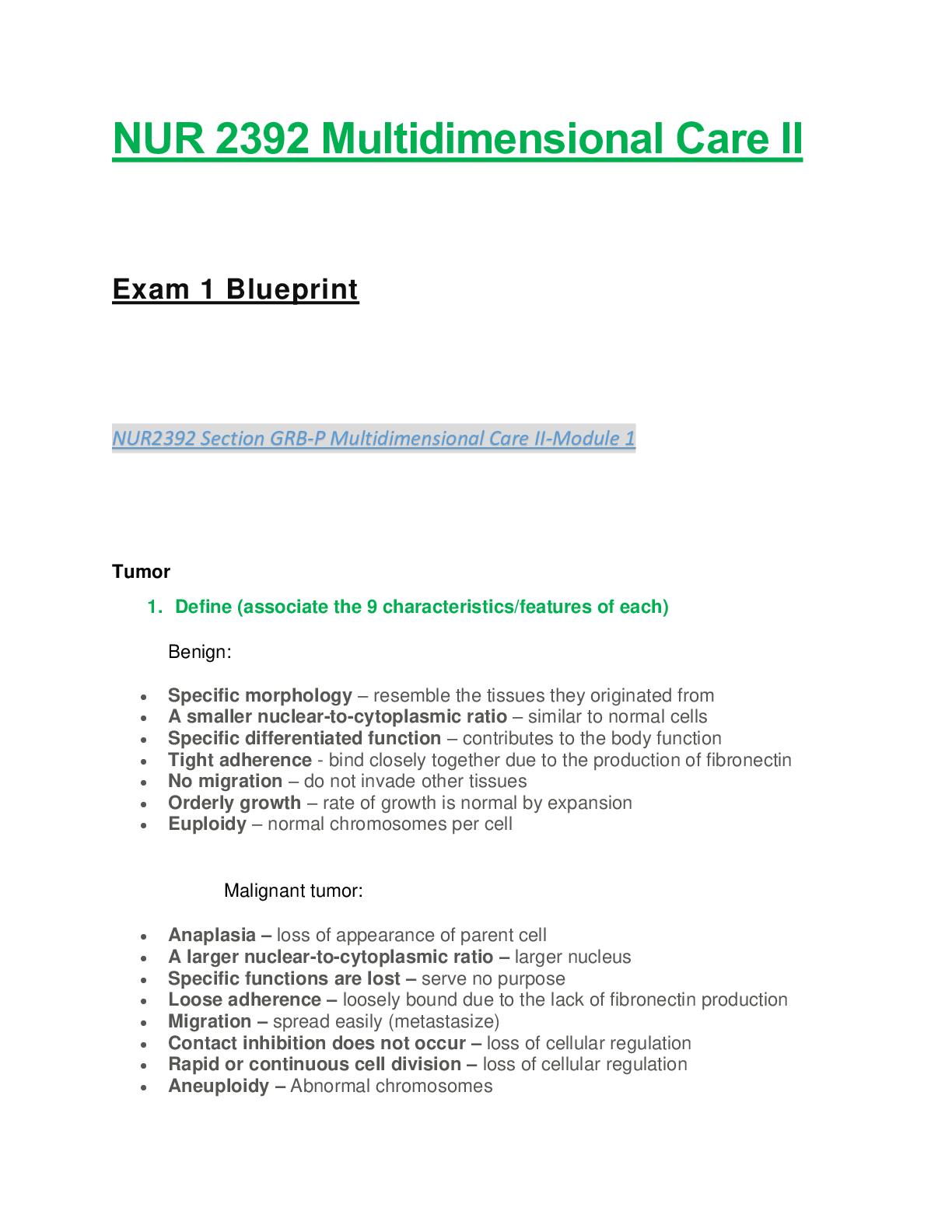
Reviews( 0 )
Document information
Connected school, study & course
About the document
Uploaded On
Aug 23, 2022
Number of pages
14
Written in
Additional information
This document has been written for:
Uploaded
Aug 23, 2022
Downloads
0
Views
47


.png)

 exit exam – Brand New Q As! Guaranteed Pass w-A+ Actual Screenshots w-Questions & Answers Included!!! Test Taken 4-11-2022 (I scored 1162!!!).png)

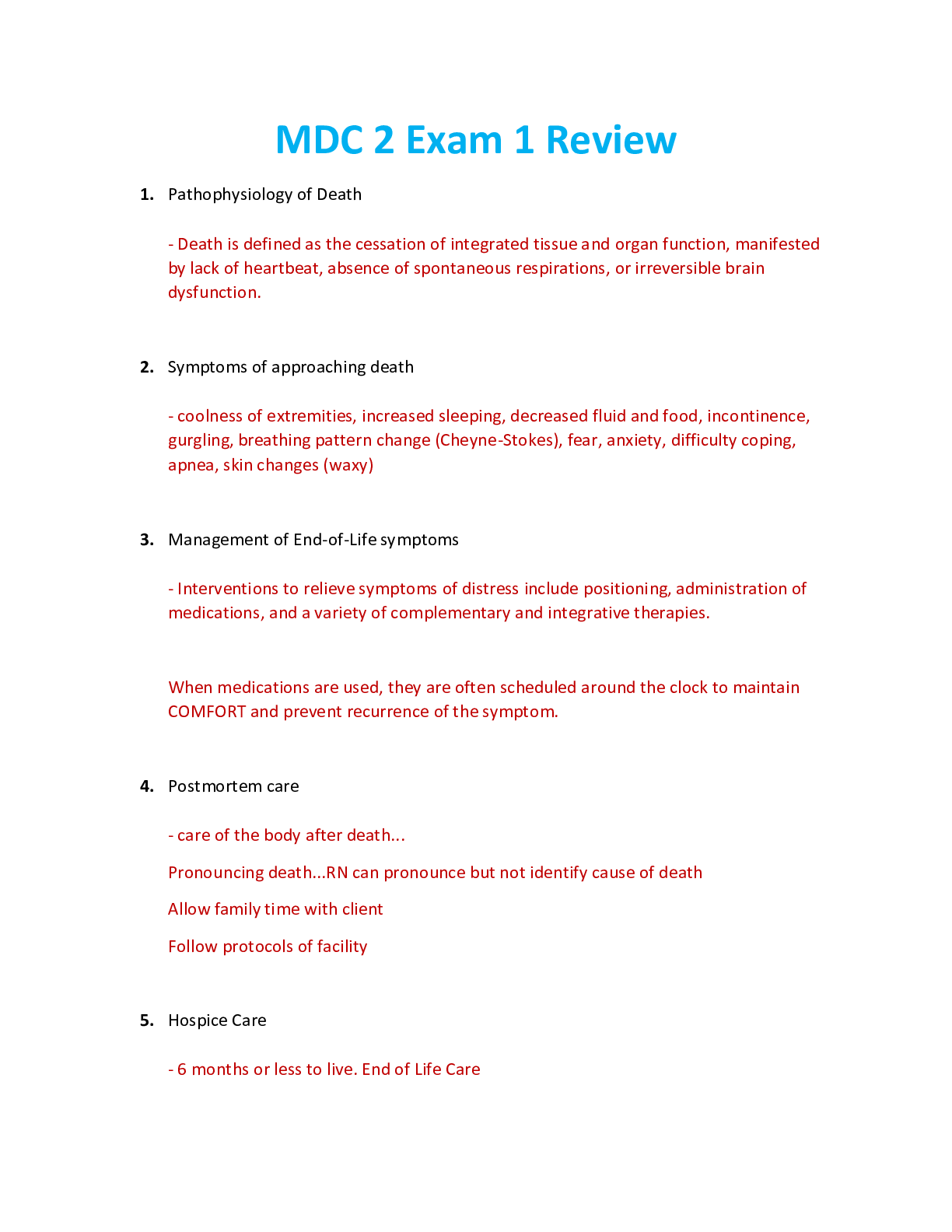


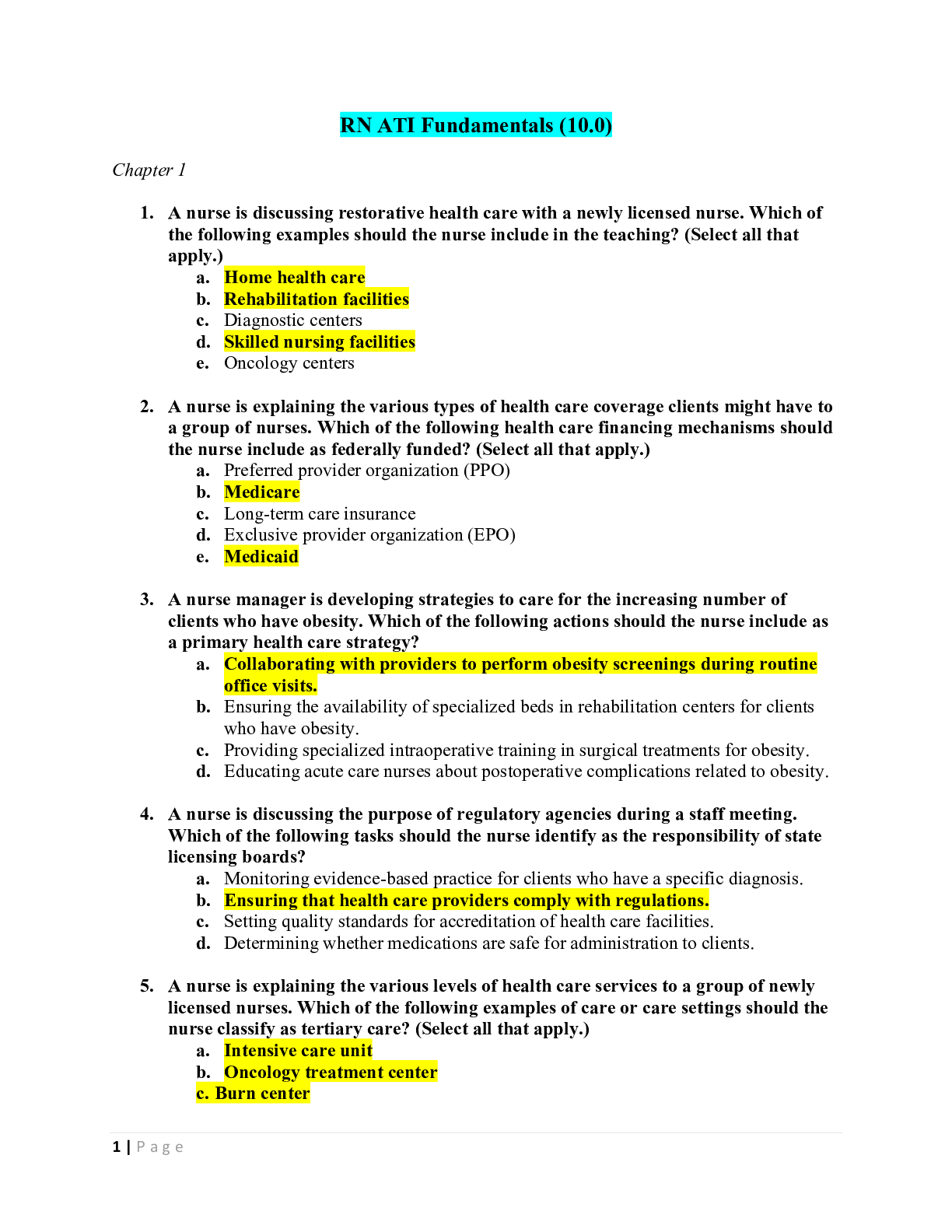

 Exit Exam Brand New Questions and Answers Guaranteed Pass With A+ Score.png)

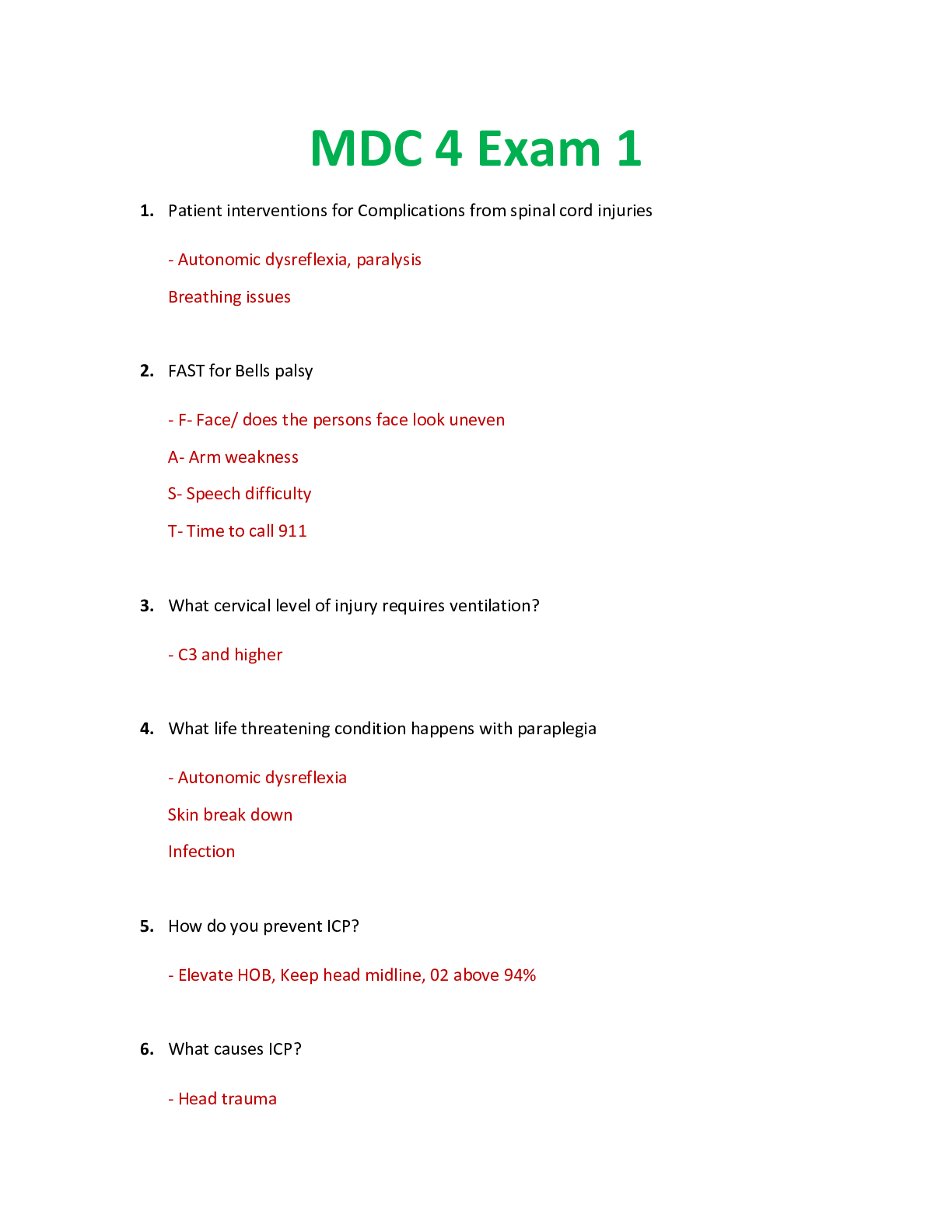
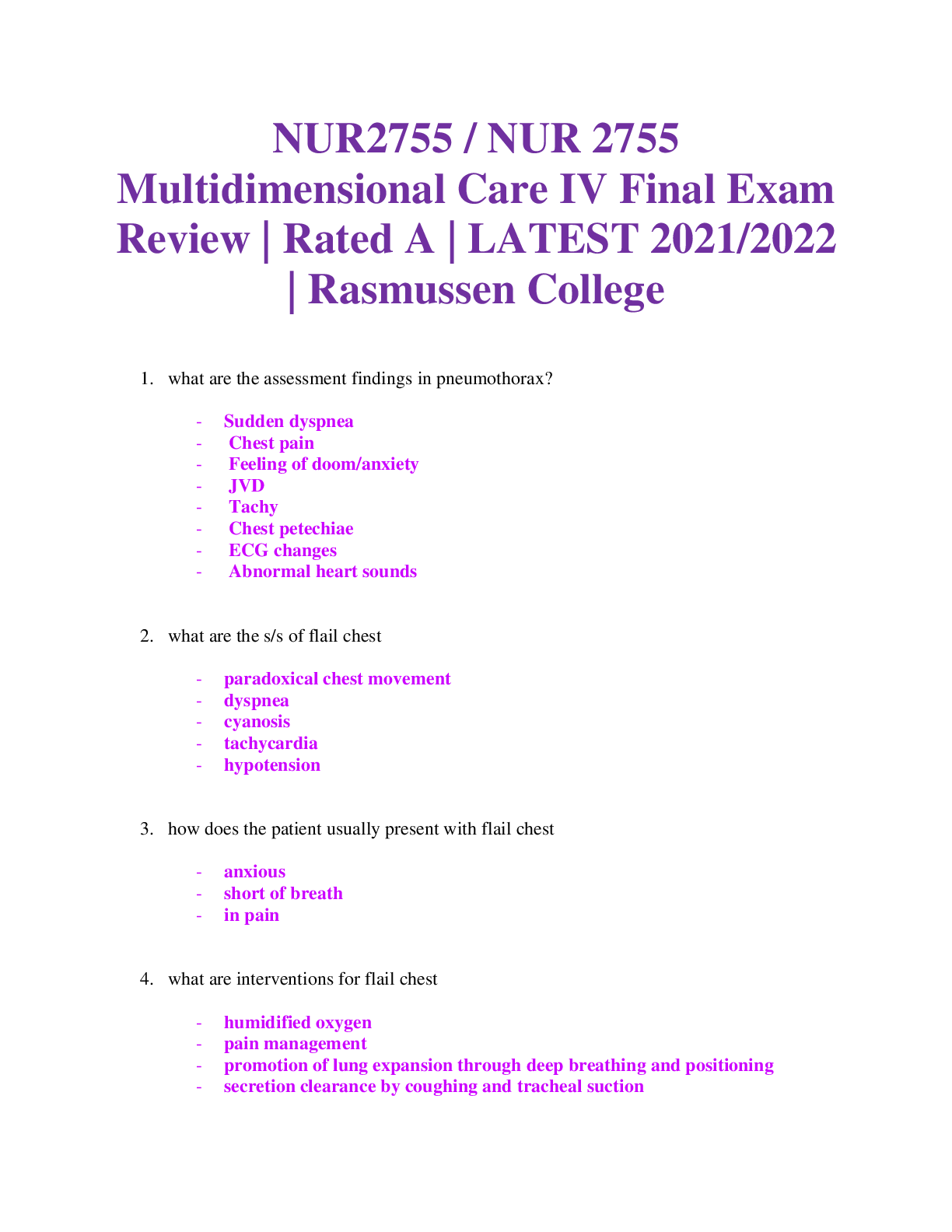
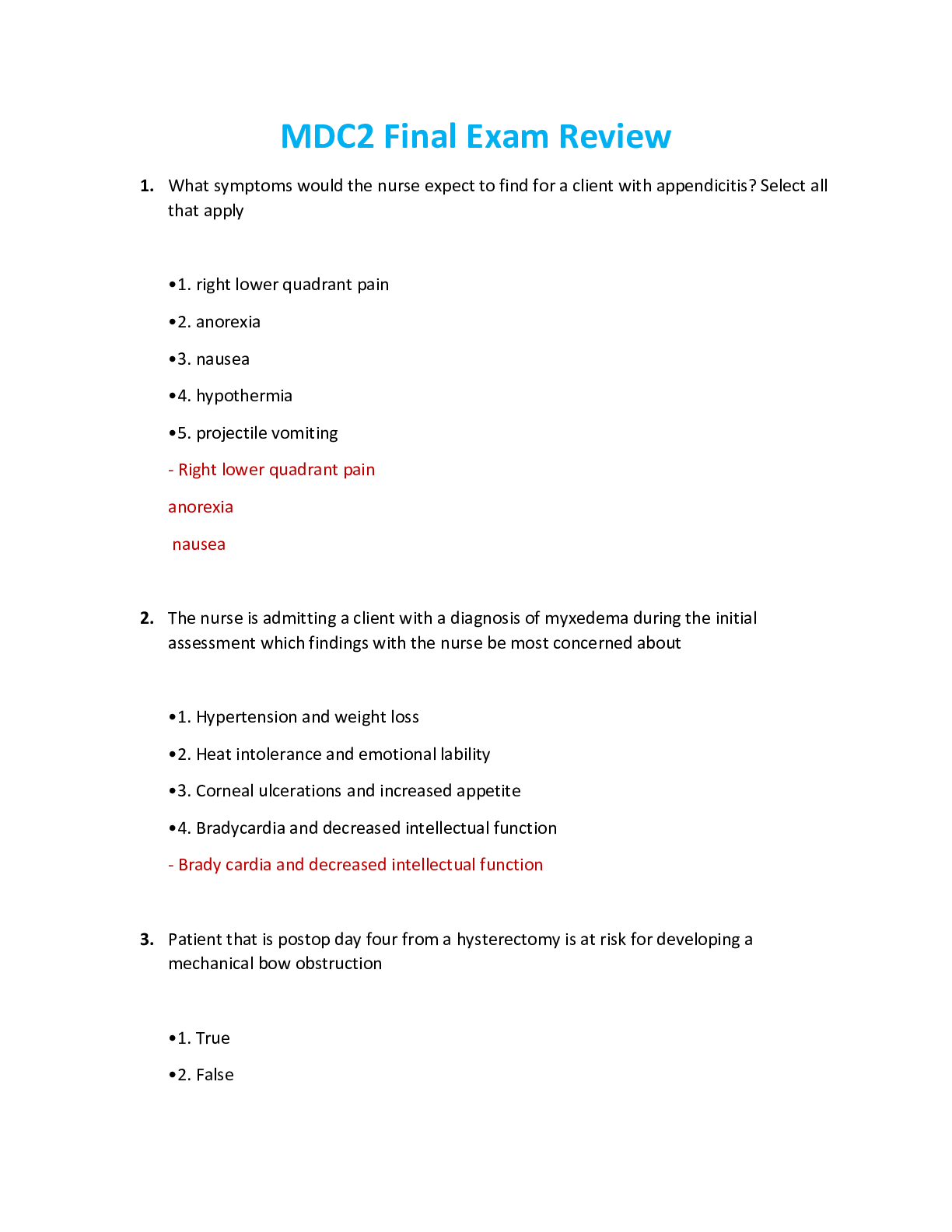

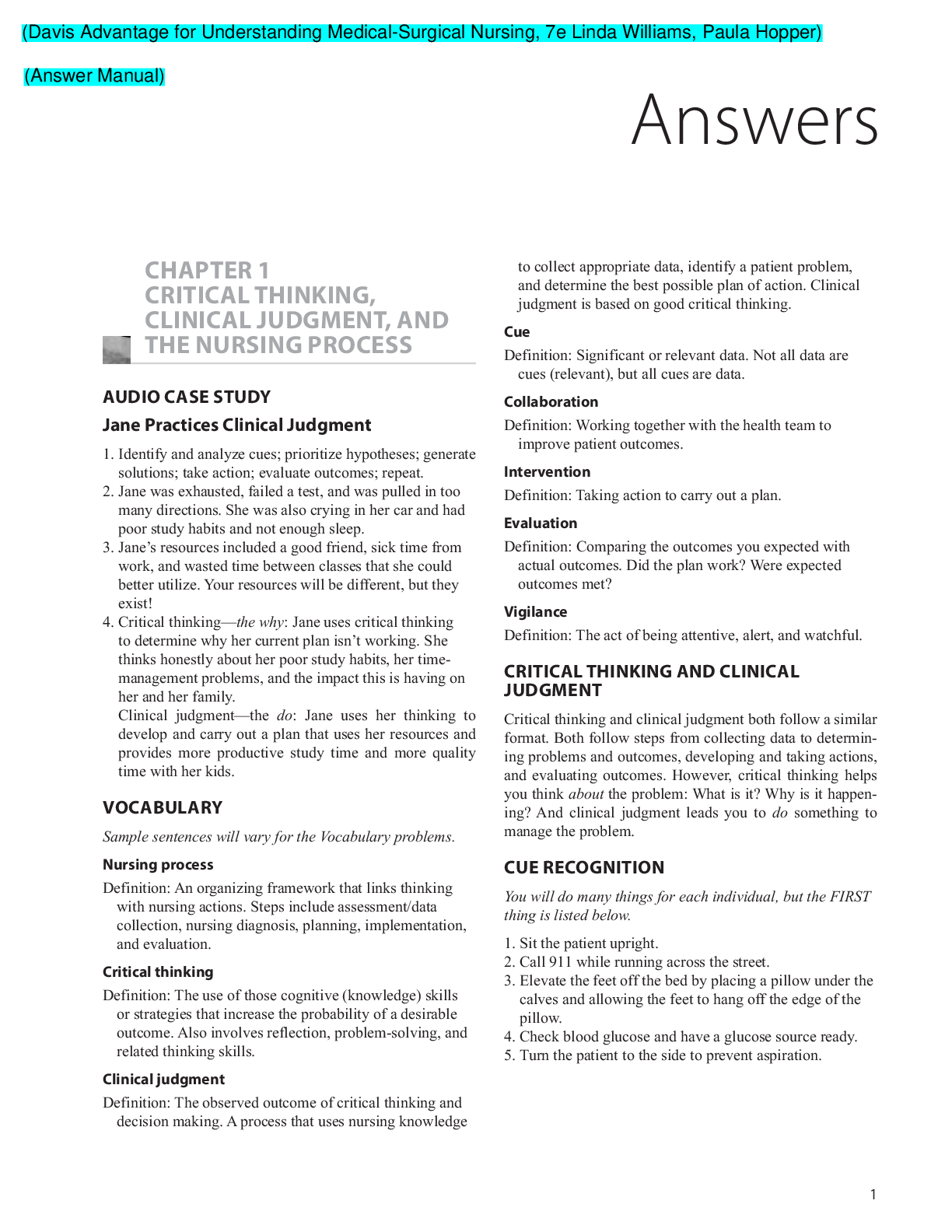

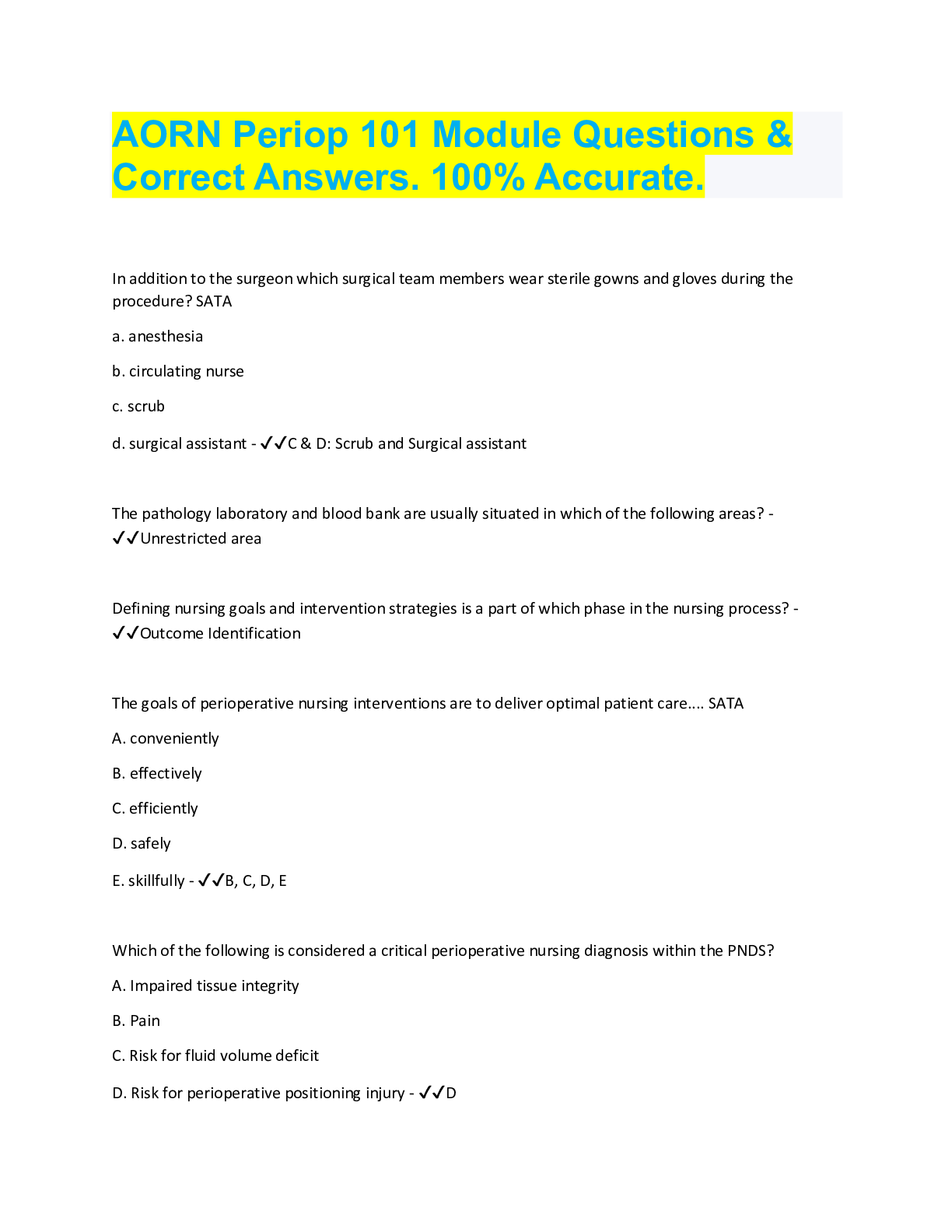






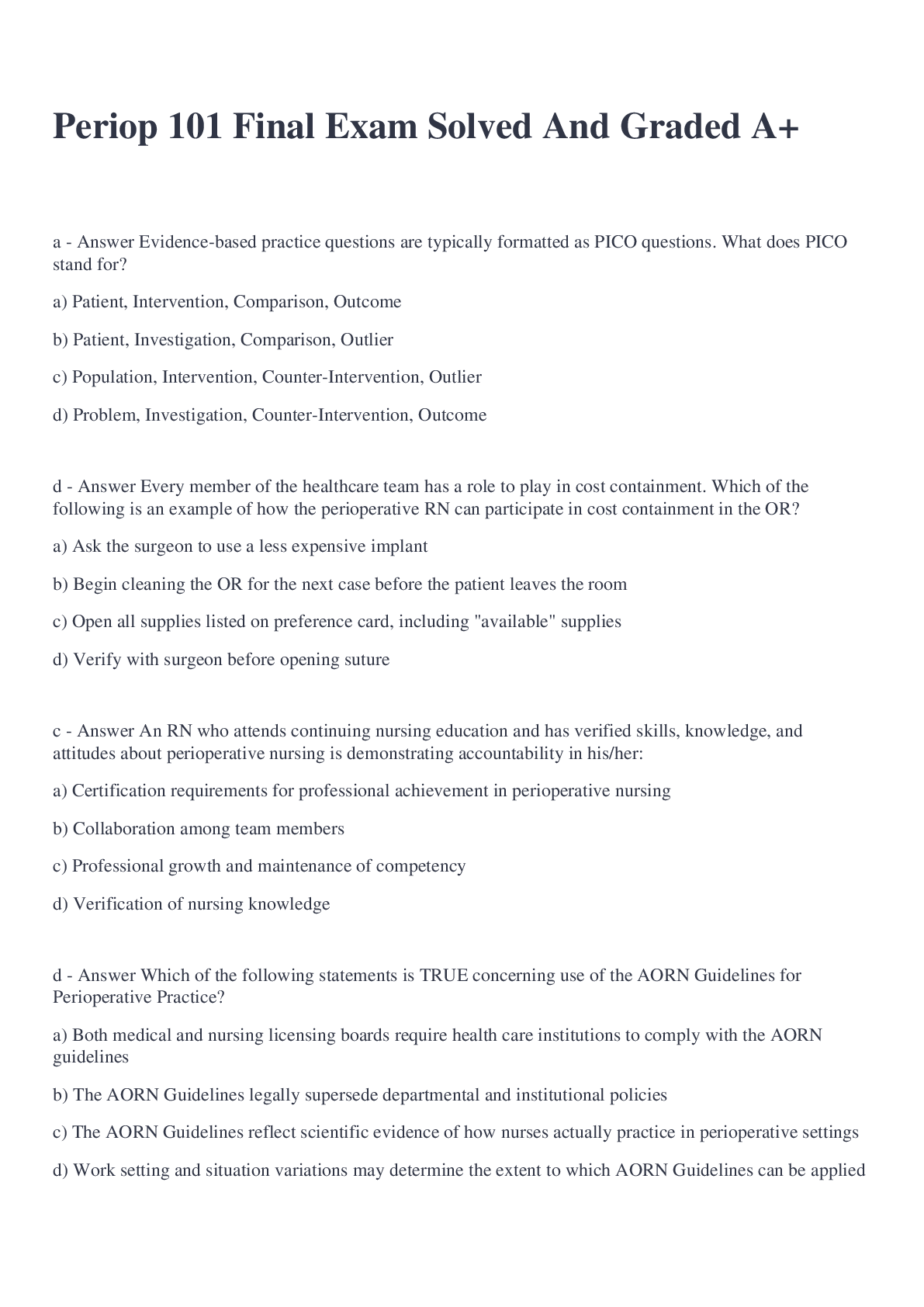





.png)

